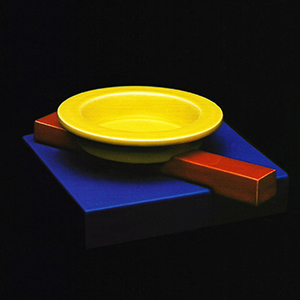Women in Argentine industrial design
DOI:
https://doi.org/10.35305/23626097v8i15.346Keywords:
design, Argentina, women, industry, universityAbstract
In Hochschule für Gestaltung, HfG Ulm (School of Design), only 15% of the students were women, a much lower percentage than that in Bauhaus. In Argentina, as the twentieth century progressed, political phenomena that changed history occurred. The rise of Colonel Perón from the Ministry of Labor to the Presidency during 1945 transformed the power of industrial workers, and the figure of his second wife, Eva Duarte, gave way to the most important changes for the role of women in Argentine daily life.
The Industrial Design career at the Faculty of Fine Arts of the National University of La Plata -since its creation in 1963 and until 1986- had mostly male students. Very few women registered in it. But we rescue four examples of women who knew how to follow a historical path standing out with solvency and character. The incorporation of women to the industrial design field was also constantly hampered by social prejudices and mistrust feelings which have been successfully and fundamentally overcome by their professionalism.
Downloads
Metrics
References
Arendt, H. (2005). La condición humana. Buenos Aires, Argentina: Ed. Paidós.
Blanco, R. (2005). Crónicas del diseño industrial en Argentina. Buenos Aires, Argentina, Ed. FADU.
Bonsiepe, G. (1979). Fragmentos del diseño industrial en América latina. Summarios, 6(34), 123-160.
Carranza, M. (2014). Intercambios sobre la enseñanza del diseño en la Argentina desarrollista. El caso de la Escuela Superior de Bellas Artes en la Universidad Nacional de La Plata. Anales del Instituto de Arte Americano e investigaciones estéticas, (43), 183-199.
Devalle, V. (2009). La travesía de la forma: emergencia y consolidación del Diseño Gráfico. Buenos Aires, Argentina: Ediciones Paidós.
Hervás y Heras, J. (2015). Las mujeres de la Bauhaus: de lo bidimensional al espacio total. Buenos Aires, Argentina: Ed. Diseño.
Jung, C. (1974). El hombre y sus símbolos. Madrid, España: Ed. Aguilar.
La Regenta prolonga la exhibición de 'Mujeres al Proyecto' hasta el 19 de agosto. (2007, julio 31). elDiario.es. Recuperado de https://www.eldiario.es/canariasahora/cultura/regenta-prolonga-exhibicion-mujeres-proyecto_1_5609534.html
Lucena, D. (2015). Contaminación artística: vanguardia concreta, comunismo y peronismo en los años 40. Buenos Aires, Argentina: Biblos.
Perón, E. (1952). La razón de mi vida. Buenos Aires, Argentina: Ed. Peuser
Perón, J. (1953). 2do. Plan Quinquenal. Buenos Aires, Argentina: Ed. Presidencia de la Nación.
Toffler, A. (1980). La tercera ola. Barcelona, España, Plaza y Janes Editores.

Published
How to Cite
Issue
Section
License
Open access policy
A&P Continuidad is a non-profit and open access publication. According to Mexico Declaration on Cultural Policies, the journal distribution is submitted to Creative Commons Attribution-Noncommercial-ShareAlike 4.0 International Public License (CC BY-NC-SA). “Neither the commercial use of the original work nor that of the possible derivative works are allowed. The distribution of derivative works should be submitted to the license regulating the original work. This license is not free.”
A&P Continuidad authorizes the partial or full reproduction of texts and graphs provided that the source is cited. Authors are exclusively responsible for the criteria expressed in the articles which do not necessarily reflect the opinion of the Editorial Committee or that of the Direction Board. The copyright of the published articles pertains to their authors or publishers.
Transfer of rights
The acceptance of an article to be published implies the author’s transfer of rights to the journal. Authors continue to have the right to use the material in future books or publications, approve or veto the republication of their works as well as the rights related to patents or other rights. Transfer of rights form may be downloaded here.























 This OJS site and its metadata are under a
This OJS site and its metadata are under a 

